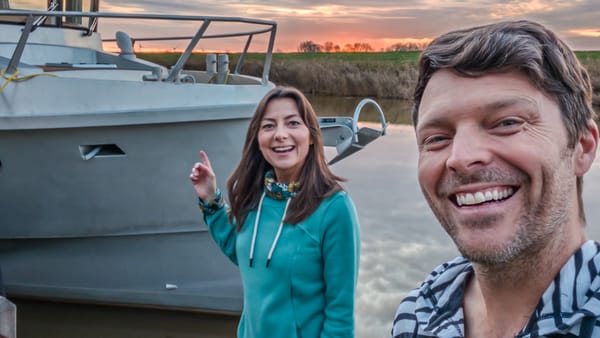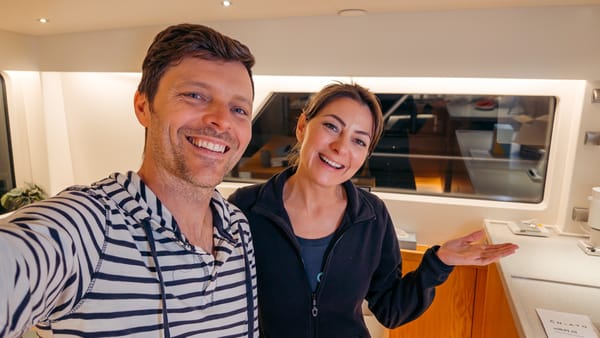Mission Panamania: Longest Passage and Biggest Storm Ever
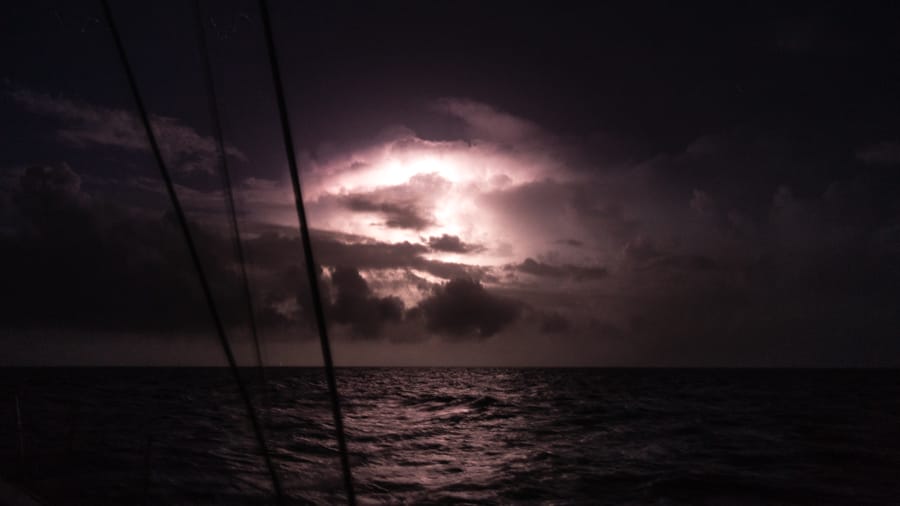
Time is a funny thing. Most of us growing up in western civilization have a keen sense of time. There are clocks everywhere and schedules rule most of our lives.
Travel, especially by sailboat is chock full of variables and uncertainties. It’s a world of never ending scenarios. Schedules are nothing more than good intentions and clocks are one of the tools used for dead reckoning. At sea, we have no control over time or circumstances, only how we react to them.
Pulling up the hook and preparing to leave Great Inagua in the Bahamas had us filled with nervous excitement. It’s our longest passage…nothing but us, endless scenarios and the open sea for well over 800 nautical miles.
Can you believe all that action and we’re only three days in! It’s incredible how quickly things turn from low key to off the charts. I can’t think of any other mode of travel that is filled with such extremes and everything in between.
Sailing is like a really good rollercoaster. It’s filled with anticipation, a little bit scary, but only for a second, then it’s thrilling and as soon as it’s over I want to get right back in line!
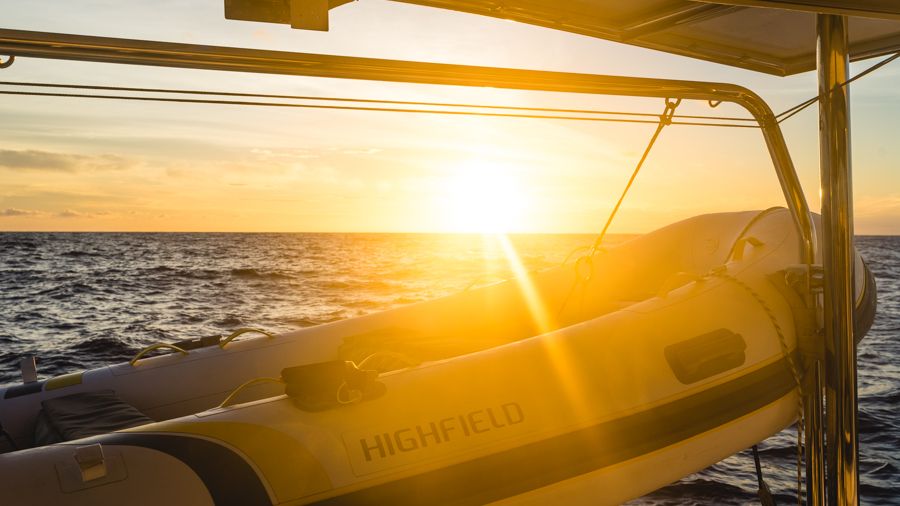
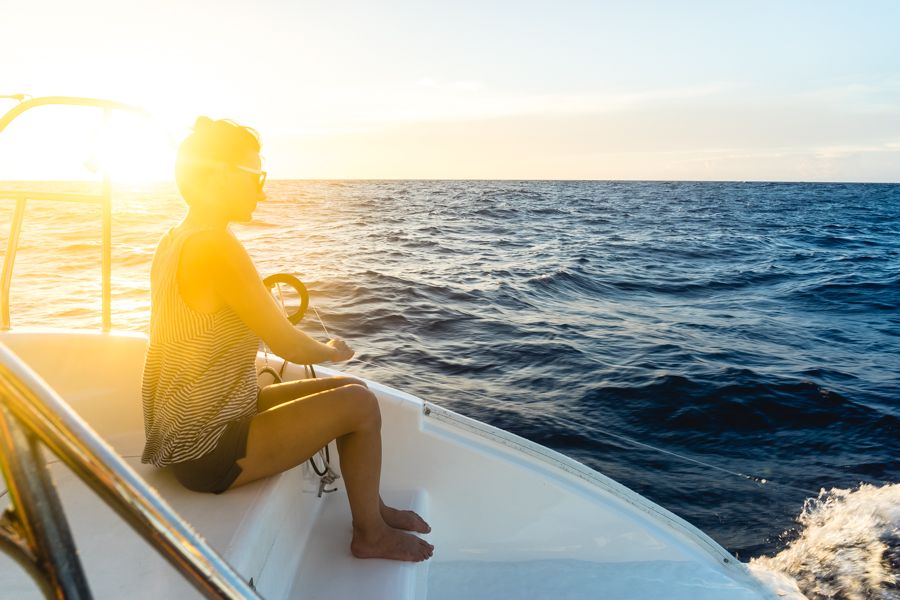
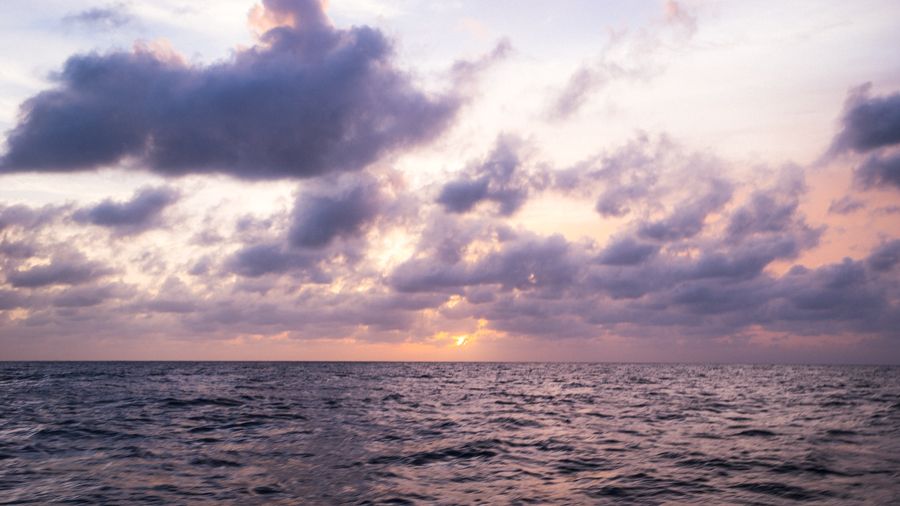
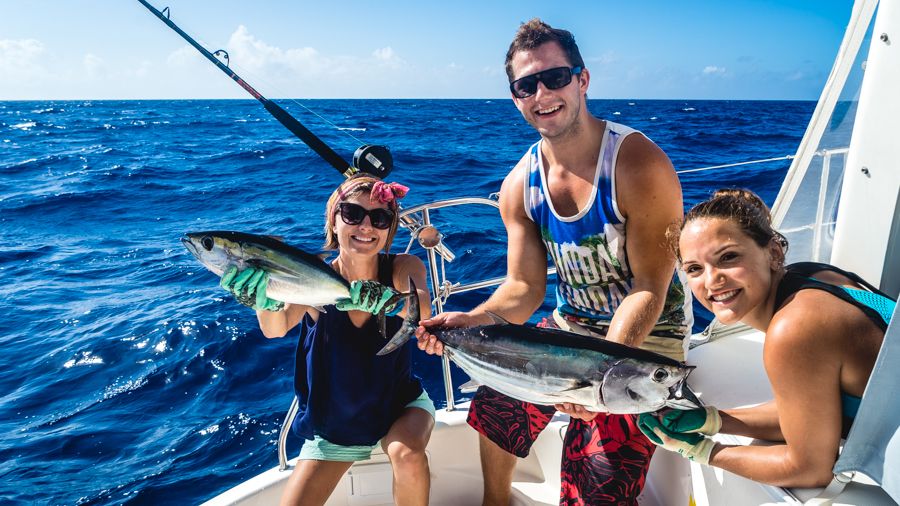
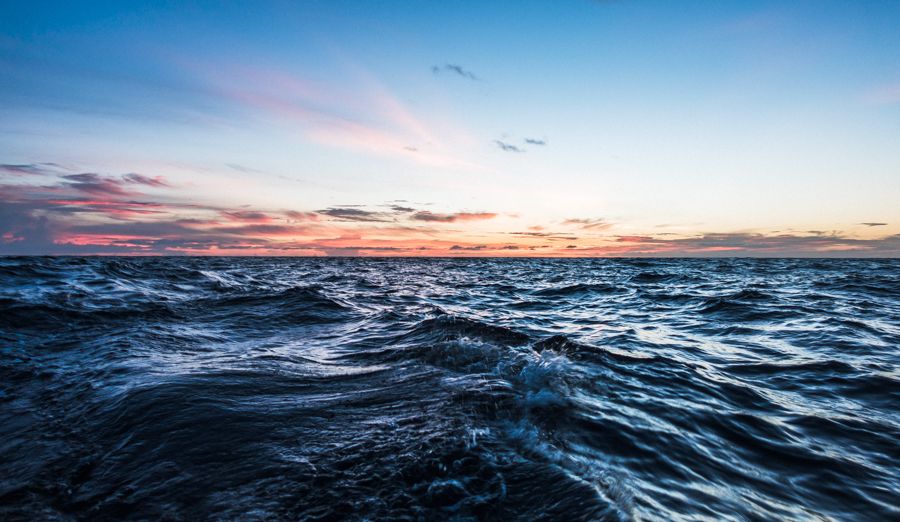
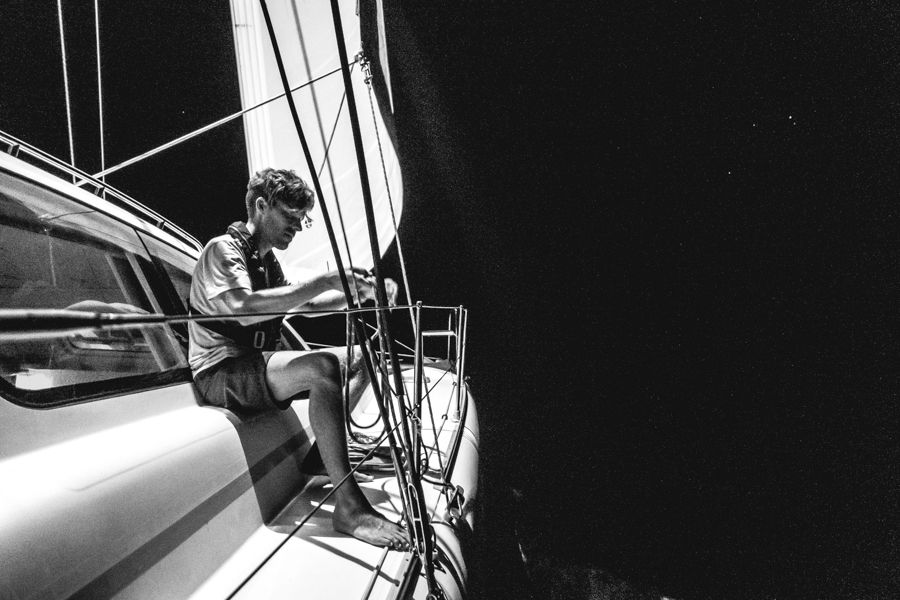
Our Biggest Storm Ever = New Top Speed
We’ve experienced some storms while sailing but never anything over 35 knots of wind, we’ve always seen them coming and had time to prepare ourselves and Curiosity. This storm, on the other hand, appeared out of nowhere, or perhaps formed right there on top of us. There was nothing on the radar and it took us completely by surprise. We went from cruising along with 15 knots of wind to 30 to 40 to 45 to almost 50 knots all in less than a minute or two.
With all that wind comes some serious speed. With nothing but a wildly loose mainsail we managed to reach a new top speed of 16.1 knots! If you would have asked me at the time, I would have sworn we were going even faster. Curiosity felt like a rocket taking off for orbit. Exciting, exhilarating and frightening all at the same time.
What We Learned
Because we were sailing downwind at 120 degrees, we had the main sail out as far as we could get it. We attached a preventer to help trim the sail and keep it from slamming because the waves were closer to our beam. This is a pretty common setup for light wind days on our catamaran. When the wind quickly picked up, the trouble wasn’t our preventer, Jason was on that like white on rice. The issue was once we removed the preventer our main sail was way out there.
What made it tricky is the sail had quickly bent itself around the shrouds (that’s the standing rigging holding our mast up) and it seemed the only way to get it off and down was to head up…which is not the best thing to do in a storm with heavy wind. With the mainsail so far out to starboard we were afraid to crank in the mainsheet because the sail had a ton of pressure on it. We were able to center the traveler and that helped but centering the main just seemed unsafe. This all had us slightly puzzled which means it took far more effort and time to get the sail down. But that’s the “fun” of learning in real-time, right?
For storm tactics, we had been taught to loosen the sheets first thing. This allows the sail to spill more wind which means less pressure, slower speeds and less opportunity to break stuff. But, every storm we’ve hit so far has been while sailing upwind, not downwind. In this case, because we were already so far down wind, loosening (or easing) the mainsheet was not the correct thing to do. Combine a loose mainsheet with the intense wind and waves and now we’ve got a recipe for a disastrous jibe. I was afraid to point the boat any further down wind than my controlled 120-130 degrees. This kept the pressure in the main sail, so it was impossible for the boys to muscle the mainsail down. This is why we decided the only solution was to perform a controlled turn upwind.
In the end, we successfully brought the sail down without any damage to our crew or Curiosity. Next time we’re faced with a squall while on a Broad Reach point of sail (downwind) we plan to do the following: Remove preventer, center the traveler, tighten the mainsheet while turning further downwind, sail dead downwind, lower mainsail. Of course, all while clipped in to jacklines and wearing off-shore life vests. 😉
And, if anyone knows of a good a catamaran storm tactics book please let us know (everything I have found is written specifically for monohulls, since catamarans are so very different the same rules don’t always apply).
What happened to The Inverter?
That’s a good question! We think it’s heat related. We push our inverter pretty hard with our high draw electrical devices (intentionally for testing purposes), so keeping them cool is a priority. Sadly when Just Cats installed our new inverter we didn’t connect the extra 12v fan. We’ll order a new temperature switch for the 12v fan in Panama so it kicks on at 90 degrees or something. Once we get it solved we’ll share the solution.
Solar Power is Fantastic
If you noticed in the video at 8:27 our aft panels are in full sun while our hard top panels are completely shaded. While we’re sailing the shading issue is REAL, and it can completely destroy the input of any solar setup if it’s not wired correctly. We’ve planned for this issue with our new sailboat solar array and we’ll dive into this a lot deeper with a future tech video. However, one must have device is the little Xantrex Pro Battery Monitor we installed, it’s crazy cheap and way more accurate than the crappy analogue battery gauge that’s standard from the factory. Not sure what a battery monitor is or what it does, check out this video: gonewiththewynns.com/how-to-monitor-batteries-rv-sailboat-tiny-house
AIS
Our new Garmin AIS 600 is a huge safety upgrade. It alerts us with time to impact or closest approach (that’s what I was showing at 19:07 seconds in the video). When we’re out in the middle of the ocean it’s fun to scan around the chart plotter and see the vessel details of other boats…even if they’re a 100 miles away. It’s almost like a video game and it can distract a bored helmsman for hours.
Sailing Report
To see our full map with interactive pins, click here: gonewiththewynns.com/map
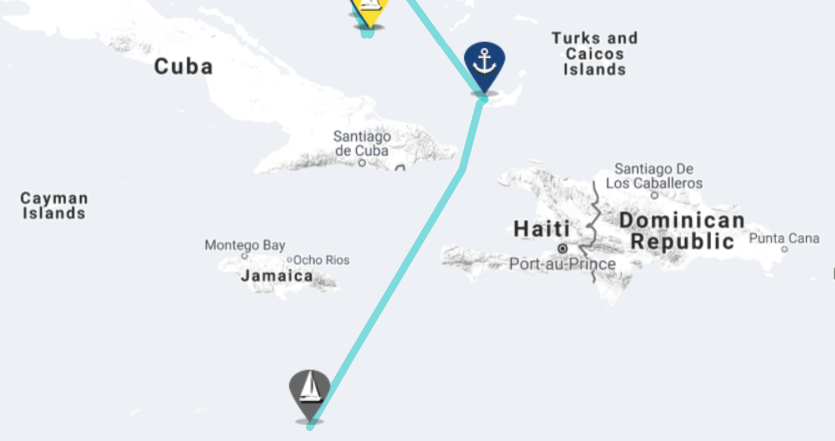
Dates: July 26-29, 2017
Nautical Miles Sailed: 445 (average of 148 miles a day)
Anchorage: None! This is our first long passage!
Cell & WiFi: No cell coverage out in the middle of the ocean. This is where our Iridium Go and Predict Wind for weather and communications comes in: bit.ly/PredictWindIridium
Gear Used In This Video
-
- All of our fave gear (i know we have a lot of new gear to add, coming soon) – gonewiththewynns.com/store
- Quatix 5 Watches: Garmin Wearables These are the new blue watches we have been wearing. We will share the full scoop on them soon because they are hands down our new fave piece of gear.
- Chartplotter: Garmin 7612xsv Multi-touch More on this soon too, we’re still learning and figuring it all out.
- iPad Mount at Helm: http://amzn.to/2fT84PG Using iPad Pro: http://amzn.to/2d9Oopf With These Sailing Apps:
- iNavx: http://bit.ly/2vGgC51
- Garmin Bluecharts with Active Captain: http://bit.ly/2tgnRmA
- Iridium Go and Predict Wind for weather and communications: bit.ly/PredictWindIridium
- Curiosity’s Underwater Lights, excellent for navigating anchorages with reefs at night: MIU15 in Ice Blue (Use discount code WYNNS for 7.5% off)
- Entertainment at Sea, Kindle and Prime Unlimited Reading: http://amzn.to/2mpGQ9K
- Fishing gear section coming soon!
Cameras Used to Capture This Video
- Main Camera – Sony A7ii: http://bit.ly/a7rii-sony
- Sony Zoom Mic: https://www.gonewiththewynns.com/product/sony-gun-zoom-microphone-black
- Sony 24 – 70mm f4 lens: http://bit.ly/2470-zeiss
- The Helm Camera – Sony Action Cam: http://bit.ly/sony-as300
- All of our photo and editing gear: gonewiththewynns.com/best-travel-camera-video-photography
Dale and Justin
Want to see more of Dale and Justin? You can find them here:
- YouTube – youtube.com/channel/UC5JTLYjTrJC5TJl9_KJPD4g
- Instagram – instagram.com/djsdives/
- Twitter – twitter.com/DjsDives
Thanks for being a part of our journey! If you liked this and want to help us keep the videos and posts flowing, check out our Say Thanks page. It lists out some ways you can show us some digital love and most won’t cost you a penny.

